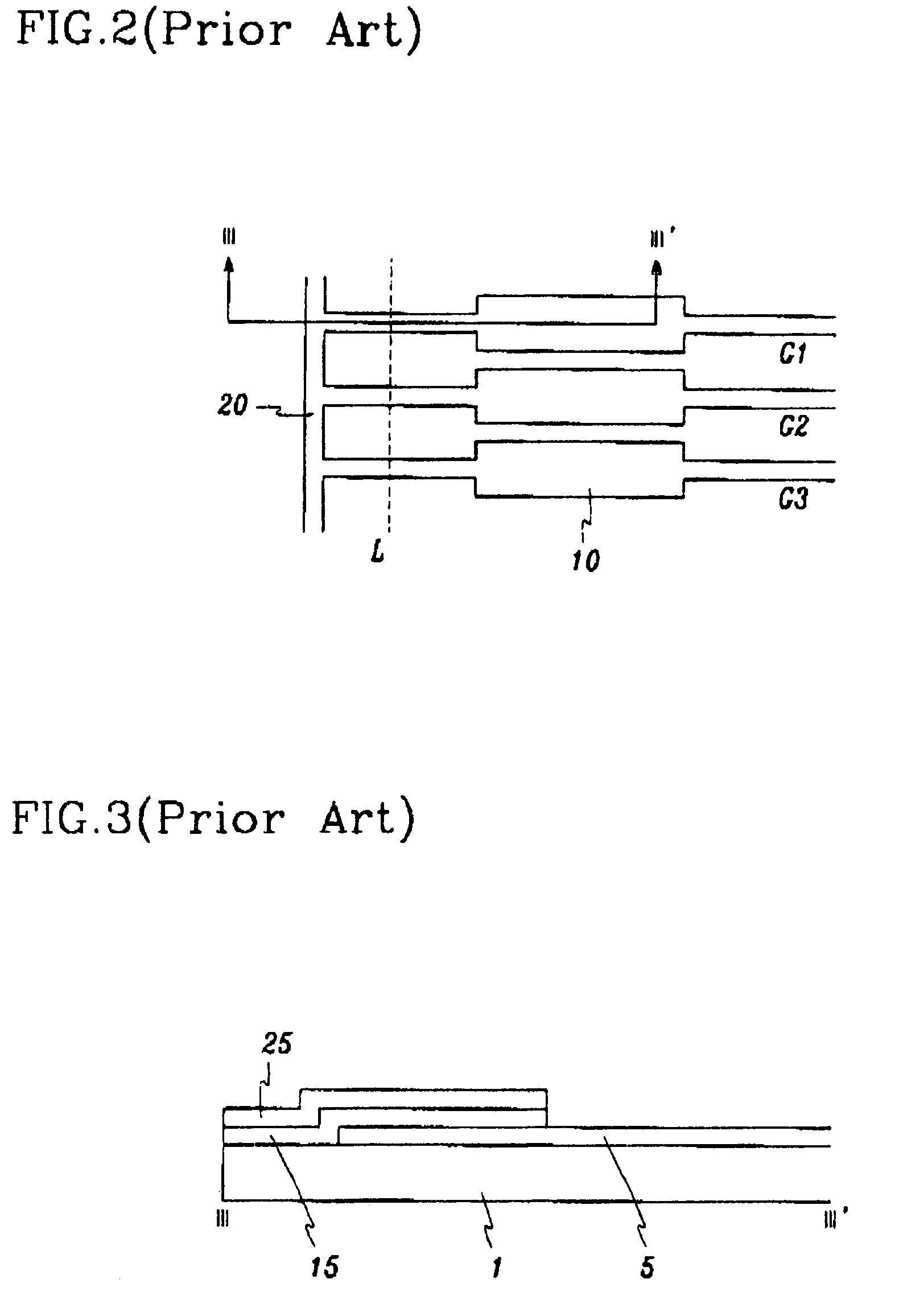Multiple testing bars for testing liquid crystal display and method thereof
- Summary
- Abstract
- Description
- Claims
- Application Information
AI Technical Summary
Benefits of technology
Problems solved by technology
Method used
Image
Examples
second embodiment
[0067]A second embodiment shown in FIG. 7 has a structure in which the additional step of removing the gate shorting bar is not required before the array tests.
[0068]The structure of the connection between the first and the second secondary lines 410 and 420 and the gate extensions 101, 102 and 103 in the second embodiment is similar to the structure in the first embodiment, but each gate extension is separated from the gate shorting bar 200 in a manner that some portions of the gate extensions 101, 102 and 103, the gate insulating film 150 and the passivation film 250 between the gate shorting bar 200 and the first secondary line 410 are removed. The gate extensions 101, 102 and 103 are separated from the gate shorting bar 200 in the final manufacturing step and it will be described more in detail afterward.
[0069]In the second embodiment, the step of cutting the substrate before the array test is not required because the gate shorting bar 200 and the secondary lines 410 and 420 are...
first embodiment
[0070]Instead, after the test, the secondary lines 410 and 420 are removed simultaneously by cutting the substrate along the cutting line L2 as in the
[0071]FIG. 9 is an enlarged layout view of a portion C in FIG. 5, and FIG. 10 is a cross-sectional view taken along line X–X′ in FIG. 9, which specially show the connection of a data shorting bar to a third, a fourth and a fifth secondary line.
[0072]As shown in FIGS. 9 and 10, a third, a fourth and a fifth secondary lines 210, 220 and 230 made of the same metal as a gate wire are formed on a substrate 1 in the horizontal direction, and a gate insulating film 150 is deposited thereon. A data wire 55, including data lines D1, D2, D3 and D4, data pads 510, 520, 530 and 540, data extensions 501, 502, 503 and 504 extending from the data pads and a data shorting bar 400 connected to the data extensions, is formed on the gate insulating film 150. A passivation film 250 is formed thereon.
[0073]Contact holes F, H and J are formed in the passiva...
third embodiment
[0125]FIG. 18 shows testing wave forms to improve this problem.
[0126]In FIG. 18, signals DR, DG and DB applied to R, G and B pixel columns and signals Godd and Geven applied to odd and even gate lines are mostly similar to the signals in the second embodiment. Instead, the signals applied to the R, G and B pixel columns invert with a period of two times the width of the gate pulse.
[0127]Therefore, there is no difficulty in charging the R, G and B signals into the pixels, it is easy to synchronize the gate pulse and the data signals, and the flicker effect is reduced. As a result, the test method according to the third embodiment is superior to test a uniformity and defects under high and off states.
PUM
 Login to View More
Login to View More Abstract
Description
Claims
Application Information
 Login to View More
Login to View More - R&D
- Intellectual Property
- Life Sciences
- Materials
- Tech Scout
- Unparalleled Data Quality
- Higher Quality Content
- 60% Fewer Hallucinations
Browse by: Latest US Patents, China's latest patents, Technical Efficacy Thesaurus, Application Domain, Technology Topic, Popular Technical Reports.
© 2025 PatSnap. All rights reserved.Legal|Privacy policy|Modern Slavery Act Transparency Statement|Sitemap|About US| Contact US: help@patsnap.com



